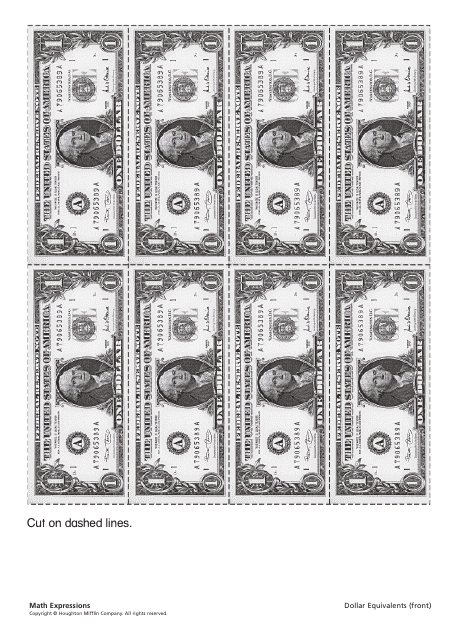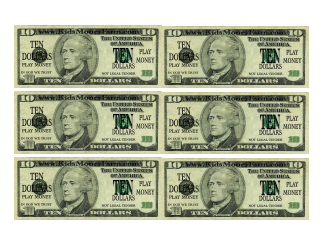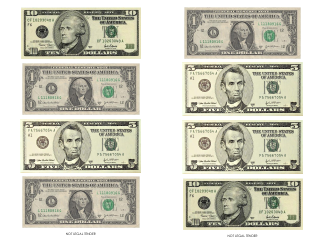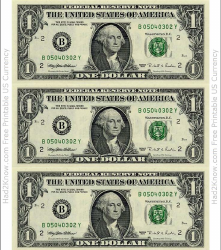One Dollar Bill Templates, Dollar Equivalents Chart - One Dollar Bills and Cents
The One Dollar Bill Templates and Dollar Equivalents Chart is used for educational purposes. It helps in understanding the design and features of the one dollar bill and provides a chart that shows the equivalent value in cents for each individual dollar bill.
The Federal Reserve is responsible for creating One Dollar Bill templates and the Dollar Equivalents Chart.
FAQ
Q: Is there a chart that shows the equivalent value of one dollar bill in cents?
A: Yes, there is a chart available that shows the equivalent value of one dollar bill in cents.
Q: How can I use a one dollar bill template?
A: You can use a one dollar bill template to create custom play money, educational materials, or for artistic purposes.
Q: Can I use a one dollar bill template to create real currency?
A: No, using a one dollar bill template to create real currency is illegal.
Q: What are the different denominations of US currency?
A: The United States has currency denominations of $1, $5, $10, $20, $50, and $100.
Q: Is the design of the one dollar bill the same as other denominations?
A: No, the design of the one dollar bill is different from other denominations of US currency.
Q: Can I use one dollar bills in Canada?
A: No, the one dollar bill is not accepted as legal tender in Canada. Canada uses one dollar coins called "loonies" instead.
Q: Are there any special features on a one dollar bill?
A: Yes, the one dollar bill contains several security features, such as watermarks, security threads, and color-shifting ink.
Q: Can I exchange damaged or torn one dollar bills for new ones?
A: Yes, you can exchange damaged or torn one dollar bills at a bank for new ones, as long as more than half of the original bill is present.








